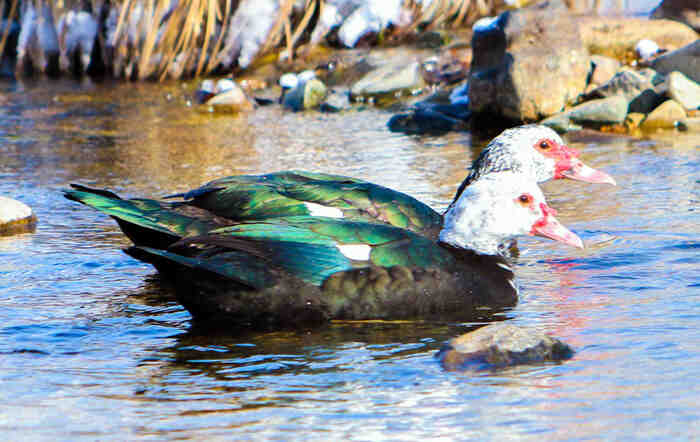Asarcornis scutulata
IUCN
LCBasic Information
Scientific classification
- name:Asarcornis scutulata
- Scientific Name:Asarcornis scutulata,White wing forest duck,White-winged Duck,White-winged Wood Duck,Cairina scutulata
- Outline:Waterfowl
- Family:Anseriformes
Vital signs
- length:66-81cm
- Weight:7.5-15kg
- lifetime:No textual research information is available
Feature
The head and neck were white, covered with black spots, and the wings were covered with white feathers
Distribution and Habitat
It is distributed in Eurasia and northern Africa, including the whole of Europe, Africa north of the Tropic of Return, the Arabian Peninsula, and Asia north of the Himalayas - Hengduan Mountains - Minshan Mountains - Qinling Mountains - Huai River. The region of south-central Africa, including the southern part of the Arabian Peninsula and the entire African continent south of the Sahara Desert (Tropic of Cancer). South America, including Colombia, Venezuela, Guyana, Suriname, Ecuador, Peru, Bolivia, Paraguay, Brazil, Chile, Argentina, Uruguay and the Malvinas Islands (also known as the Falkland Islands). Indochina Peninsula and southeast coastal areas of China, including Myanmar, Vietnam, Laos, Cambodia, Thailand, southeast coastal areas of China, Hong Kong region of China, Hainan Island.
Appearance
White wing duck body length 66-81cm, is a large duck, black feathers, short feet, foot claws strong and sharp, wings with white cover. His head and neck were all white with black spots. Male and female ducks are similar in size and colour, but female ducks are smaller and darker than male ducks. The white winged duck is a large living duck with black feathers, short feet, strong sharp claws, and white covering feathers on both wings. His head and neck were all white with black spots. Male and female ducks are similar in size and colour, but female ducks are smaller and darker than male ducks. They rest during the day among the leaves of large trees [2] and feed at night in the dark, weedy pools and slow-moving streams of the forest. They nest in tree holes near swamps and lay 6-13 eggs at a time, which hatch for 33 to 35 days.
Details
Cairina scutulata is a white-winged duck with no subspecies.

The white-winged duck is classified together with the wart-nosed duck in the genus Periscopus. However, analysis of cytochrome b and NADH dehydrogenase subunit 2 in mitochondrial DNA and biogeographical distribution patterns indicate that the similarity between white-winged ducks and warty nosebirds is decreasing. Therefore, it is suggested that they should be classified in the monotypic genus, which is not related to the wart-nosed duck, but is closely related to the diving duck.
White-winged ducks rest in the leaves of large trees during the day and forage in dark, weedy pools and slow-moving streams in the forest at night. It is an omnivorous bird, eating mainly seeds, aquatic plants, insects, worms, mollusks, frogs and small fish.
White-winged ducks nest in tree holes near swamps and lay 6-13 eggs at a time, which hatch for 33 to 35 days.
Due to habitat loss, low numbers and hunting, the white-winged duck is listed as an endangered species by the International Union for Conservation of Nature and under the Convention on International Trade in Endangered Species of Wild Fauna and Flora (CITES). Appendix I protection.
Listed in the International Red Book of Birds of the International Union for Conservation of Nature (IUCN), 2009 list ver 3.1 - Endangered (EN).
It is listed in the second level of the List of China's National Key Protected Wildlife.
Protect wild animals and eliminate wild meat.
Maintaining ecological balance is everyone's responsibility!








